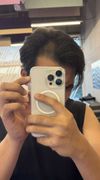TLDR The pull test and wash test are cheap, easy methods to diagnose hair loss.
The document from 2015 discussed two noninvasive methods for diagnosing hair loss in women: the pull test and the wash test. The pull test involves pulling on the scalp hair in four different areas and counting the hairs that come out. Normally, only telogen hairs are shed, and their number should not exceed four to five for the whole scalp. The number and morphology of the hair roots can suggest the diagnosis of non-scarring or scarring alopecias. The wash test involves washing the hair after not shampooing for 5 days and counting the hairs collected on the basin floor. The total number of shed hairs indicates the severity of hair loss, with telogen effluvium indicated when more than 100 hairs are shed. The percentage of vellus hairs (those shorter than 3 cm) indicates the severity of androgenetic alopecia. These methods are simple, cheap, and useful in diagnosing hair loss.
 3 citations
,
October 2015 in “International Journal of Dermatology”
3 citations
,
October 2015 in “International Journal of Dermatology” Normal hair density and diameter ratios were established to help diagnose adult hair loss.
 14 citations
,
May 2013 in “Experimental Dermatology”
14 citations
,
May 2013 in “Experimental Dermatology” The modified wash test is better than TrichoScan® for diagnosing hair loss.
 31 citations
,
October 2010 in “Journal of the European Academy of Dermatology and Venereology”
31 citations
,
October 2010 in “Journal of the European Academy of Dermatology and Venereology” Some people with heavy hair shedding might actually have a hidden form of alopecia, which can be identified by specific hair changes.
14 citations
,
January 1999 in “Dermatology” Hair shedding in children is normal and increases with age.
 September 2024 in “International Journal of Research and Review”
September 2024 in “International Journal of Research and Review” Wiesbaden 30C effectively reduces hair fall and improves hair growth in young adults with Telogen Effluvium.
 23 citations
,
January 2013 in “Indian Journal of Dermatology, Venereology and Leprology”
23 citations
,
January 2013 in “Indian Journal of Dermatology, Venereology and Leprology” FPHL causes hair loss in women due to genetics and hormones; minoxidil and anti-androgens are treatments, and early intervention is advised.
4 citations
,
January 2017 The pull and wash tests are simple, cost-effective ways to diagnose hair loss severity and type.
 1 citations
,
October 2013 in “Expert Review of Dermatology”
1 citations
,
October 2013 in “Expert Review of Dermatology” Diagnosing alopecia areata is challenging and requires careful examination and various tests to distinguish it from other hair loss types.
 November 2025 in “Dermatology and Therapy”
November 2025 in “Dermatology and Therapy” The drinkable supplement increased hair growth and was safe for women with hair loss.








